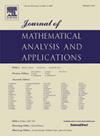二元广义泊松分布及其与二维赫尔墨特多项式的关系
IF 1.2
3区 数学
Q1 MATHEMATICS
Journal of Mathematical Analysis and Applications
Pub Date : 2024-11-19
DOI:10.1016/j.jmaa.2024.129006
引用次数: 0
摘要
在本文中,我们考虑了双变量广义泊松(G-P)分布,它是用三变量还原法从汇合超几何分布推导出来的。我们研究了它的一些重要性质,如生成函数、递推关系和概率微分方程。此外,我们还证明了某些双变量 G-P 分布与二维赫尔墨特型多项式相关。因此,我们得到了 2D-Hermite 多项式的几个公式。本文章由计算机程序翻译,如有差异,请以英文原文为准。
Bivariate generalized Poisson distribution and its relation with 2D–Hermite polynomials
In this paper we consider the bivariate generalized Poisson (G-P) distribution, which is derived from the confluent hypergeometric distribution using the trivariate reduction method. We study some of its important properties such as generating functions, recurrence relations, and differential equations for its probabilities. Furthermore, we show that the certain bivariate G-P distribution is related with the 2D–Hermite type polynomials. As consequence, several formulas for the 2D–Hermite polynomials are obtained.
求助全文
通过发布文献求助,成功后即可免费获取论文全文。
去求助
来源期刊
CiteScore
2.50
自引率
7.70%
发文量
790
审稿时长
6 months
期刊介绍:
The Journal of Mathematical Analysis and Applications presents papers that treat mathematical analysis and its numerous applications. The journal emphasizes articles devoted to the mathematical treatment of questions arising in physics, chemistry, biology, and engineering, particularly those that stress analytical aspects and novel problems and their solutions.
Papers are sought which employ one or more of the following areas of classical analysis:
• Analytic number theory
• Functional analysis and operator theory
• Real and harmonic analysis
• Complex analysis
• Numerical analysis
• Applied mathematics
• Partial differential equations
• Dynamical systems
• Control and Optimization
• Probability
• Mathematical biology
• Combinatorics
• Mathematical physics.

 求助内容:
求助内容: 应助结果提醒方式:
应助结果提醒方式:


